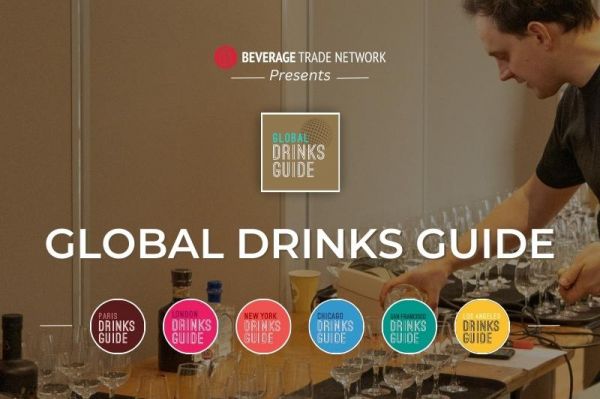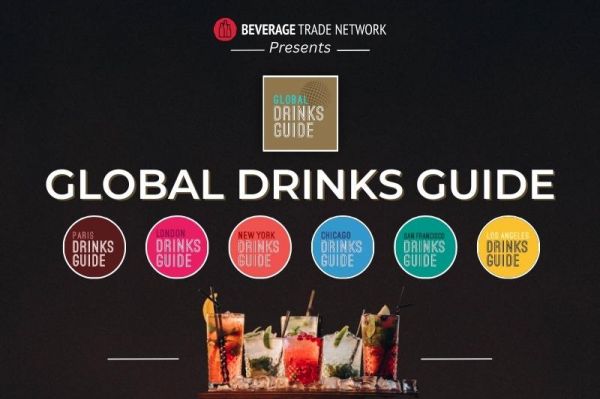









 for Beverage Brands to Include in Distribution Agreements" />
for Beverage Brands to Include in Distribution Agreements" />
Once you have identified a distributor for your products and scheduled meetings with them, it is time to negotiate the terms of your deal before sales and marketing operations begin.
In conversation with Donna Hartman, ESQ, Attorney at OlenderFeldman LLP we talk about the 10 key provisions that beverage companies must include in their distribution agreements.
1. Products
In addition to identifying each SKU of each product that the distributor will carry, you must also consider the path you will take for new products you will introduce in the market in future
• Current Products – Define the current line of products that you would like to sell through the distributor with exact details of brands and sizes.
1.Brand(s) – Mention all the products that you will be selling through the distributor. Each varietal of wine will be a different product
2.Sizes - For example, a 750 ml and 1.5L bottle of the same wine is two different SKUs.
• Future Products – Plan for future product offerings. What are your options for the future? Discuss this with your distributor.
1.Line Extensions – these may fall naturally in the lap of your distributor, or if you are being conservative, you could even withhold these and examine the performance of your current distributor before offering them these.
2.New Products – If you are currently selling a brand of whiskey, and expand into a line of beers in future would you like to consider a new distributor or go with your current distributor? Your current distributor may not have the same strengths as a beer distributor to sell this line of products. On the other hand, you may have a good relationship with your current distributor and feel comfortable in them handling your new line of products.
• Distributor’s Right of First Refusal – Your distributor would probably ask for the right of first refusal on future product offerings, meaning that they get the first option of taking on any new products. If they decide to turn these down, then you are free to take these products to other distributors.
2. Territory
Which areas do you want to sell your product in? Are you looking to go national, or want to sell in a few states, or do you want to limit yourself to particular metro areas?
1.Define Area - You could have a distributor in the metro NY area for example and a different one in upstate NY. It is important to go over this with your distributor and define territories clearly, so if you have multiple distributors they are not competing with one another.
Where distributor may sell
Where other distributors may sell
2.Exclusivity – A distributor representing your brand may ask for exclusive rights in selling your brand in a state, county or a bordered territory. You would want to outline this in the agreement.
3.Supplier’s Retention Rights - Some companies have the right to sell product directly to the consumer, like wineries with a cellar door. If you make a sale through this channel, does the profit go to your distributor? Clarify this with your distributor to avoid any confusion.
3. Pricing and Payment Terms
This is fairly straightforward and mandatory to cover in an agreement.
1.Pricing to Distributor – Be sure to include your recommended retail price; the pricing is based on pickup point or delivery so mention that and the bill back allowed to the distributor.
2.The frequency of Price Changes – If you wish to change the pricing of your product to reflect inflation, or a change in the cost of goods, or even a large currency fluctuation, you will need to work within the bounds of the state and distributor to roll out these changes.
How often are you able to do this and have this effectuated in the marketplace? The distributor or even the state may not allow constant price changes to the product so you must plan for this. There are state laws that also tie into this, sometimes there is a lag time for the price change to take effect in the marketplace.
3.How / When Payments Are Made – Be clear about this with your distributor. What are the net terms? Are there any contingencies?
A situation may arise where your stock may not have sold as expected and the distributor refuses to make payment for this, but you did not provide the stock on a consignment basis and therefore expect payment. What are the provisions for this in your distributor agreement?
4. Roles and Responsibilities
By adding tangibility to this aspect, a better working relationship can be achieved with your distributor.
1.Marketing Plans and Support – Define the marketing plans and support you are providing with clear tenets. What is the duration of these offers? Are they for a particular territory or type of accounts?
2.Calling On Accounts – Some suppliers have their own sales teams and brand ambassadors. One needs to make sure that their teams are targeting different areas from their distributors’ sales teams rather than duplicating efforts.
3.Inventory Levels – What is the minimum inventory level that a distributor must maintain – 30 days, 60 days or 90 days? How much notice do you require to fulfill refill orders? Have a conversation to avoid running out of supply in the market on a frequent basis and interfering with sales efforts.
4.Reporting – There is some data that is available to the distributor and some that they can purchase or source from sources. Explain what you would like to see in terms of reports and what the distributor is able to provide.
Are you expecting monthly, quarterly and annual reports? What level of reporting do you require – by sales person, brand, SKU, on and off premise accounts? This will give you greater visibility on how your product is tracking through the supply chain.
5. Term
Define the term of the agreement, the duration and whether it is set to expire or auto renew at the end of the mentioned term.
1.Length of Agreement – Suppliers are usually looking for shorter term agreements and distributors are looking for longer term ones. It is best to discuss an optimal term with your distributor/wholesaler.
2.Expiration – Does the agreement expire automatically by a calendar year date or a set period?
3.Automatic Renewal – Generally wholesalers prefer to have this clause in the agreement, so if either party does not provide notice, their sales agreement continues without interruption and they don’t need to renegotiate terms.
6. Termination
An agreement may terminate as per it’s natural expiration date, but you may want to exit before this date as well.
Without Cause – This is also called ‘For convenience’. A notice period is defined in the agreement based on which either party can exit the agreement with no harm done.
For Cause – This is the case when you wish to terminate an agreement due to a reason.
1.Performance – As a supplier, you may set performance parameters for the distributors and if you find that these goals are not being met continually then you may terminate the agreement providing notice.
2.Breach – The agreement may be breached and you could terminate the agreement on these grounds.
3.Financial – The distributor may file bankruptcy or be unable to pay bills.
4.Change in Control – You may like the ownership of a company or may have previously worked with them. If there is a merger or an owner sells their shares, the management could change hands. You may not like the new management, and if you have this provision in the agreement then you will have the ability to get out of the agreement for this reason.
5.Loss of License – In case your distributor loses their license for any reason, they will be unable to sell your product in the market. You do not want your product sitting in the warehouse in this limbo period. There must be a provision to exit the agreement in this situation and even for you or another distributor to pick up and take ownership of your inventory.
7. Intellectual Property
The intellectual property associated with your brand is a significant part of your brand’s value, therefore it is important to protect this via your distribution agreement.
Specify Intellectual Property
1.Trademarks –you must keep these intact as you work with a distributor or other companies.
2.Copyrights – Same as trademarks.
3.Patents – This may be of a more detailed nature depending on the type of patent and the usage of the same and whether this will be of commercial nature.
4.Identify Scope of Use - In this instance the scope would be to market and sell your products.
5.License Type - Specify a non-exclusive license in the distribution agreement for the usage of your brand’s trademarks as you may work with multiple distributors.
6.Duration - Notate the duration for this usage, so if your agreement terminates, so should the right to use your trademarks.
8. Events Upon Expiration or Termination
The agreement may be terminated while the wheels are still churning so you must provide for these clauses to be taken care of so as to not affect your business.
1.Pending Orders – If there are pending orders from retailers in the system, who will fulfill them in case of a termination? What if there is a shipment on the way to the distributor’s warehouse? These are questions you should answer in the agreement.
2.Inventory Repurchase - There should be a clause in your distribution agreement that either your company or your new distributor will be able to buy back inventory and marketing materials from your existing distributor in the event of the termination of the agreement.
The reason for this is to keep your product in the supply chain. For example, if your product is with the distributor and it wasn’t selling (or they were not selling it), to clear it they may dump it in the market. This may be for no malicious reason, it could be to simply generate cash flow for their business. This will tarnish the value of your brand and you will not be able to recover from this easily to sell your product for its real value rather than at a clearance price. Also, since your product is already flooded in the market, you will not be able to do fresh sales till this is sold.
Another scenario would be that since your distributor already had stock of your product, you are unable to supply the new distributor with stock. This may put you in financial jeopardy in a non-payment situation with the old distributor. This will also create a lag period for your brand during which you will be unable to fulfill any pending retail orders. It doesn’t take long to wipe out the name and value of a brand from the market if this lag period is too long and occurs repeatedly as customers lose trust in the brand’s longevity.
Marketing and Advertising Materials – The same clause to pick up or buy back inventory also applies to marketing and advertising materials.
9. Franchise State Laws
There are franchise states in the US where once you start working with a distributor, you cannot get out of that relationship without good cause. Previously, it was mentioned that a good cause to exit the agreement would be if a distributor was not meeting the performance goals you had set forth for them. In franchise states, this is not a good enough reason to be able to end your agreement. It will be dictated by the statutes of the particular state or the case law for that state, whether you can exit the agreement or not and how easily this case be done.
1.Creation of Franchise – What are the factors that constitute the creation of a franchise in that state? Familiarize yourself with these.
2.Restrictions On Termination-
In franchise states, be prudent when working with distributors. Even if you sell one case through a distributor, it could create a franchise. Therefore, study your distributor, plan your expansion meticulously and then offer distribution opportunities to a limited number of distributors.
To get out of these agreements, one can purchase the rights to their brand which is quite expensive to do. A second option that is more viable is if a distributor swap can occur willingly.
10. Dispute Resolution
When a supplier and distributor enter into an agreement, it is with the best intentions to work together, sell product, make profits and have a long-term relationship. But, things don’t always work out as planned and disputes occur. In this case, the first thing to try is for the lawyers to negotiate between the owners of the supply and distribution companies. If this does not resolve the matter, there are three ways that a dispute may be resolved.
1.Mediation – This is the best method to use. It is the least costly and the fastest. One can hope to get a good resolution as the mediator may be familiar with the industry. Since this is a specialized business, it is not easy to find someone with a knowledge of it’s unique laws.
2.Arbitration – This alternative is middle of the road, it is less expensive and speedier than litigation.
3.Litigation – This method is not friendly to business owners, it is extremely expensive, the case could be locked up in court for years and the resolution may not be suitable for one or either party as they may not have a clear understanding of the industry.
Discussing the rights of both your current and future products, defining territories and exclusivity, setting the blueprint for current and frequency of price changes, agreeing on payment terms – these are just a few of the main components of a well laid out distribution agreement that delineates the roles and responsibilities of both you and your distributor.
In order to be successful in the US market, it is essential that brand owners understand how to accurately target appropriate distribution partners and execute a distribution deal that includes well-negotiated terms that are fair and profitable for both parties.
Once you have identified a distributor for your products and scheduled meetings with them, it is time to negotiate the terms of your deal before sales and marketing operations begin.
In conversation with Donna Hartman, ESQ, Attorney at OlenderFeldman LLP we talk about the 10 key provisions that beverage companies must include in their distribution agreements.






USA Trade Tasting 2024 is pleased to share that Wines of Beaujolais will be hosting a seminar on May 22 in Chicago. Time to get your visitor tickets.

Beverage Trade Network’s Global Drinks Guide entry process is now open for 2023. Time to list your brands by city and connect with drinks enthusiasts.

2023 Brand registration for Global Drinks Guides is now open. This includes brand reviews, listing, and more for global city drinks guides.